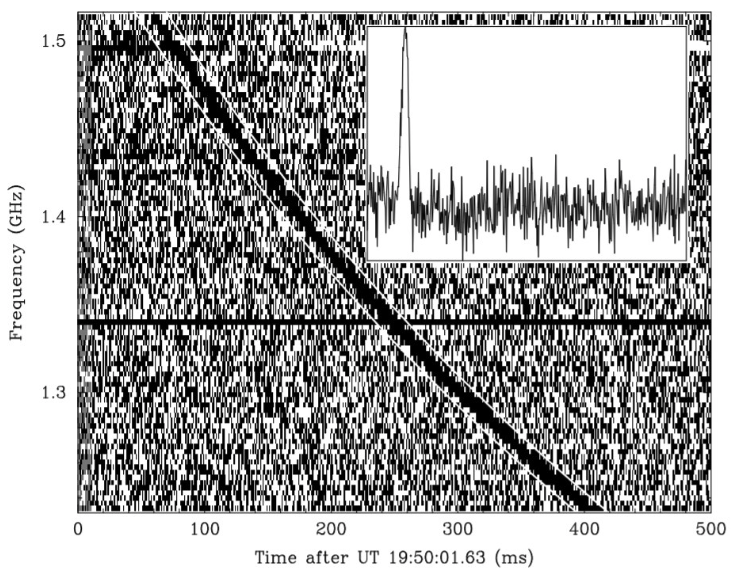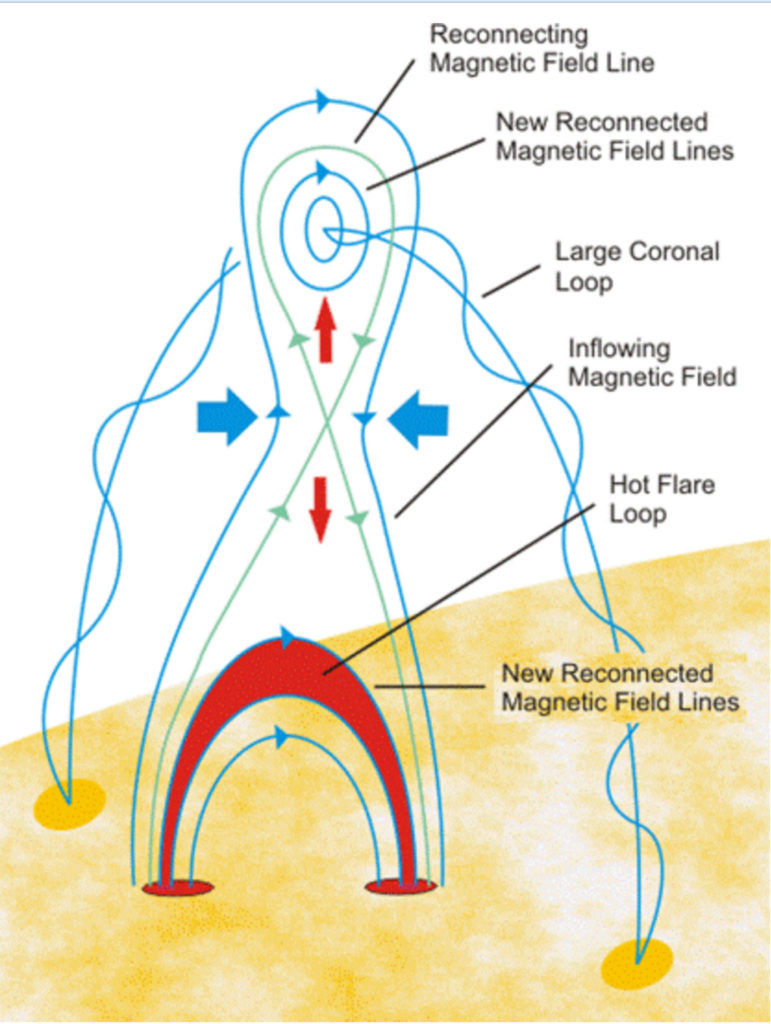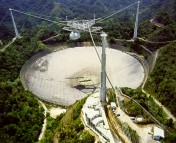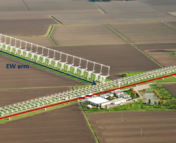Title: Fast Radio Bursts from Interacting Binary Neutron Star Systems
Author: Bing Zhang
First Author’s Institution: Department of Physics and Astronomy, University of Nevada, Las Vegas, Las Vegas, NV 89154
Status: Published in ApJL [open access on the arXiv]

This guest post was written by Yujia Wei, a junior-year undergraduate student at the School of Astronomy and Space Science, Nanjing University, in conjunction with an assignment in the Astronomical Literature Reading and Writing class taught by Professor Zhi-Yu Zhang.
She is interested in exploring the origins of fast radio bursts and gamma-ray bursts, the physics of solar flares, and the formation and evolution of galaxies. In addition to astronomy research, Yujia also likes traveling, painting, and photography.
Fast radio bursts (FRBs) are transient radio pulses that last a few milliseconds and have large dispersion measures (DMs). The DM is a measure of the time delay of radio signals at different frequencies (the lower the frequency, the later the arrival time) caused by passing through free electrons. Several observed FRBs are observed to repeat; they are called repeating FRBs.

Since the first FRB discovery in 2007, many FRBs have been recorded. Figure 1 shows some properties of an FRB. The main panel shows a plot of the dispersed burst as a function of frequency vs. time (a “waterfall” plot), and depicts that the DM of this source is large (375±1 cm-3 pc). The inset panel shows the total-power radio signal after correcting for the burst’s dispersion. Because the DMs of some FRBs are very large, it is likely that the source of these FRBs come from outside the Milky Way. The usefulness of FRB DMs for studying extragalactic objects has sparked interest in FRB research.
Despite the rapid progress in the field of FRBs, one question still remains — what is the origin of FRBs?
Recent observations (such as the one mentioned here) have found that repeating FRBs are relatively common, and that localized FRBs exist in both old galaxies and young, star-forming galaxies. There are a few observed properties of repeating FRBs that would constrain any potentially successful source models. For example, the high rate of repeating bursts suggests that it doesn’t take much energy to produce bursts. Additionally, the burst rate of FRB 121102 (a repeating FRB source thought to be located in a dwarf galaxy about three billion light-years from Earth) has not declined over the span of several years. What’s more, during multiple years of observation, the DM of FRB 121102 has not significantly evolved while rapid evolution of the rotation measure (RM) in FRB 180301 (another repeating FRB source) has been observed. Rapid RM evolution implies the presence of a dynamical, highly magnetized environment near the FRB source. The DM and RM observations are evidence of clear long-term and short-term changes.
What Can Explain the Observed Characteristics of Repeating FRBs?
Previous models of FRBs from BNS mergers have focused on the period prior to merging, where the resulting FRBs are one-time events. Here the author presents a new hypothesis for producing repeating FRBs to explain all these above observational features. Decades to hundreds of years before merging, the magnetospheres of two neutron stars would interact endlessly with each other in binary neutron star (BNS) systems. When the magnetic field lines from the magnetospheres of the individual neutron stars become close to each other, they will be disconnected or merged with other magnetic field lines and realigned, releasing a large amount of energy. This process is called magnetic reconnection and is shown in Figure 2. The magnetic reconnection process converts the energy stored in the magnetic field into heat and kinetic energy, allowing particles to flow out along the magnetic field lines. The energy-carrying particles interact with the surrounding medium to produce beams of radiation. FRBs would be detected when these bright beams of radiation are pointed at the earth.

To test how well this model works, the author estimates the total energy in an interacting BNS system by considering PSR J0737-3039A/B, a system with two pulsars (magnetized rotating neutron stars). He estimates the rotation energies of the two pulsars and the orbital gravitational energy that can be released before coalescing. The calculated total energy is higher than the FRB energy budget, which means the system can produce FRBs. The author also estimates the orbital period Porb (the period during which two neutron stars orbit each other) of the BNS system, which is on the order of about 100 seconds. The time it takes for two neutron stars to merge is proportional to 3/8 of Porb and can vary from decades to hundreds of years. This result suggests that it is possible that repeating FRB activities do not decrease over time during several years. What’s more, areas near the source of the burst may not contribute much to DM, similar to what was observed for FRBs in BNS-like environments. (“BNS-like” means it’s possible, but not conclusive, that the system is a BNS system.) This model also allows for a significantly varying magnetic field strength in the surrounding environment of the source, which means the RM of FRBs may vary greatly in a short time, consistent with the observations of FRB 180301.
What Predictions Does This Model Make?
According to this model, it can be inferred that repeating FRB sources are also gravitational wave (GW) sources, which can be detected by future space-borne GW detectors such as LISA, TaiJi and TianQin. This model also predicts that when the two neutron stars get closer together, the burst activity of repeating FRB sources (such as FRB 121102 and FRB 180301) would increase over time rather than decrease.
During the review of this paper, new observations were made: the CHIME repeating source FRB 180916.J0158+65 is observed to have a 16-day period, most consistent with being the orbital period of a binary system. The problem is that the orbital period predicted in today’s paper is approximately equal to 100 seconds, which is much shorter than the observed 16-day period.
This paper provides a model to explain the origin of FRBs.
This model of FRB production based on the BNS system successfully explains many
observational characteristics, such as the high FRB incidence, the rapid
evolution of RM, the non-evolution DM and so on. But there are some drawbacks.
For example, it cannot explain the 16-day period of FRB 180916.J0158+65. As
more and more FRBs are detected, hopefully the question of where FRBS come from
will be solved.




